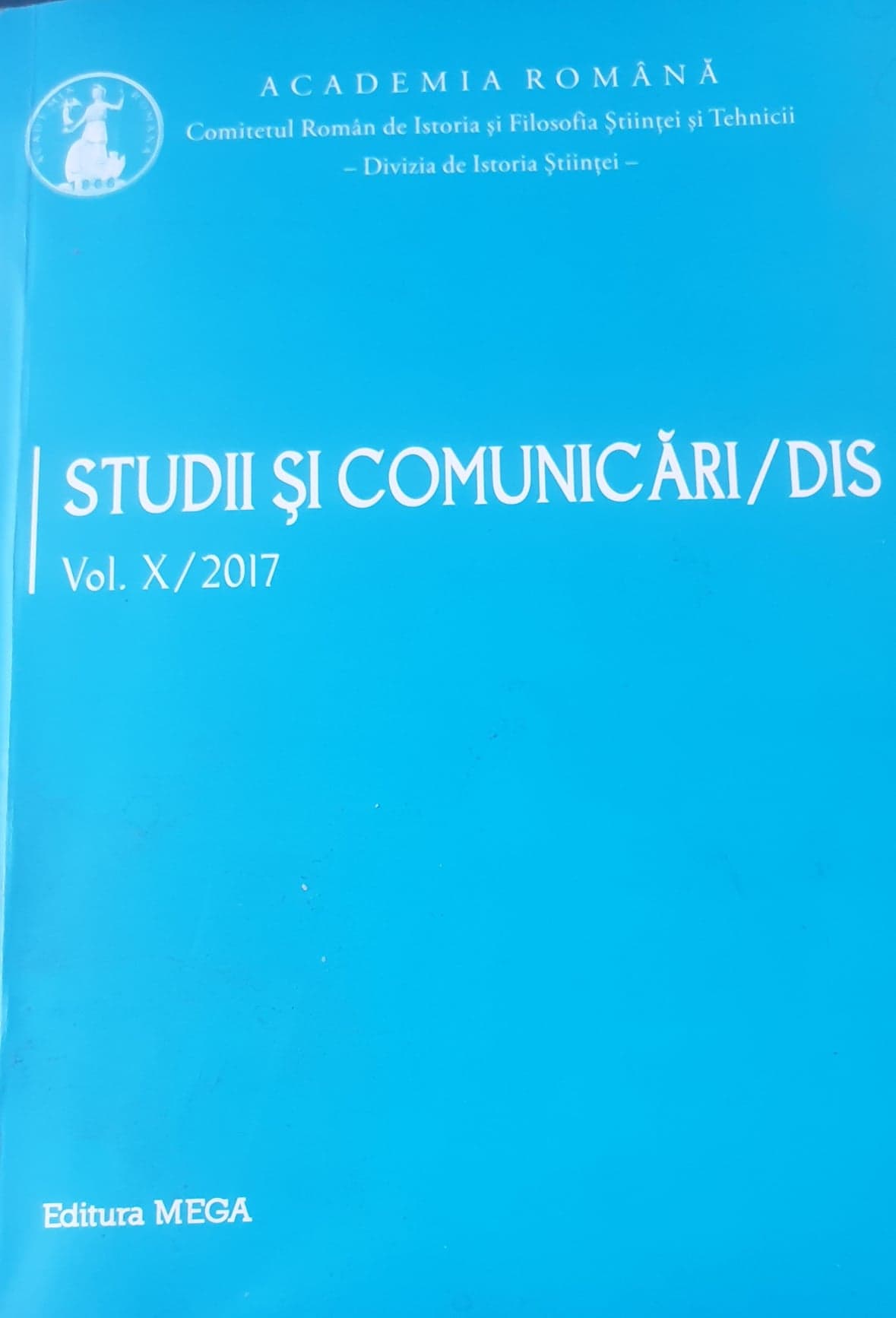Contribuţia unor personalităţi ale medicinii veterinare contemporane savantului Grigore Antipa, la dezvoltarea pisciculturii în România
The Contribution of Some Personalities in the field of Veterinary Medicine, Contemporary to Scientist Grigore Antipa, in Promoting Fish Farming in Romania
Author(s): Dumitru Curcă Subject(s): Scientific Life
Published by: Editura Mega Print SRL
Keywords: Grigore Antipa; ichthyology; ichthyopathology; vet erinary medicine; personalities;
Summary/Abstract: Scientist Antipa Grigore (1867–1944), in his 1905 „Ichthological Fauna” paper, describes some abnormalities of the head, as well as color anomalies, and species of parasites (hel minths and crustaceans) in some fish. Ciurea Ion (1878–1944), the most representative Romanian parasitologist, with the research of Neodiplostomum perlatum, begins the study of trema todes in the evolution of which, as a definitive or intermediate host, fish intervenes at a stage or another. Ion Calinescu (1874– 1946) was one of the students of the prestigious Lyon Veterinary Schools, back in the country, he initiated the establishment of the Fish Cold Stores in Galaţi and then in the Capital, where he made the first plans for the great Central Stores Obor. He was Administrator of Tulcea State Fishing between 1919–1921. Nichita Gheorghe (1890–1966) in 1928 describes ovarian degen eration in aquarium fish. Poenaru D. Ion (1868–1939) during 1927–1929 experimenting with 6 specimens of Misgurnus obtains rarefying osteitis of the vertebrae by feeding minced meat. Dinulescu Gheorghe (1896–1965), followed to the chair man agement of the Parasitology Department after the retirement of Prof. I. Ciurea in 1943. He also taught, in turn or simulta neously, the Zoology and Pisciculture. In 1932, he took over the leadership of the Pisciculture Department of the National Zootechnical Institute. In the years 1942–1944, under the guid ance of Gh. Dinulescu and his collaborator Ion Rădulescu, the foundations of the first School of Ichthyopathology are estab lished and systematic researches both in the inland waters and in the territorial waters of the Black Sea or in the Danube begin. Gh. Dinulescu, in collaboration with Professor I. Rădulescu, in 1952, draws up and publishes for the first time in the Romanian literature the book called „Ihtiopatology and Fish Hygiene”. Petre Popescu-Daia (1872–1952) graduated in 1897 the Superior School of Veterinary Medicine in Milan-Italy, with the title Dottorc in zoo-iatria (June 23, 1897), defending two theses: „Carp farming” and „Ovarotomy in the cow”. From 1923 to 1930, when he retired, he held the important position of Director of State Fishing. From his own initiative, in 1928, Popescu-Daia set up in Giurgiu the first Technical School of Fishing and Pisciculture. His contribution to the founding of the „Pisciculture Encouragement Association”. He founded and conducted between 1928–1935, the journal „Fishing and fish farming”. Petre Spânu (1894–1962) RomanianBucovinean from Vicovu de Jos commune, Suceava County, after completing the State German Highschool, which he graduated in 1913, enrolled in the contest for admission to the MedicalMilitary Veterinarian Institute from Vienna, following the courses of the Higher School of Veterinary Medicine in the capi tal of the Habsburg Empire until 1917. On November 20, 1919, he promoted the capacity examination in Vienna, continuing his research for the PhD thesis started in 1916 and continued in 1917 as a volunteer assistant at the Department of Histology, Biology and Pathology of the Fish at the Upper School Of Veterinary Medicine in Vienna. On March 31, 1920, he defended his Doctoral Thesis entitled „Über die Kloake der Zypriniden” and is promoted as a „Doctor in Veterinary Medicine”. Begnescu Petre (1908–1963) in 1942 researching bacteriologically a sabrefish caught in Galaţi County discovers in the nodules on the surface of the skin and on the internal organs, acid-resistant bacilli. Buşniţă Th. (1900– 1977) in 1949, in collaboration with veterinarian Gheorghe Vasile, studied the deformations of the skull in the perch, and in 1958 in collaboration with the veterinarian Cironeanu Ion describes the infestation of the Danube shad, with the nematode Contracaecum aduncum. Niculescu Alexandru (1916–2005), studied in the years 1945–1947, the carps infected with infectious hydropysis in the flood plains of the Danube, identifying the Aeromonas punctata bacterium and indicating some prophylactic measures. Stamatin Nicolae (1905–1993) and his collaborators, in 1954–1957, investi gated the epizootology, anatomopathological and bacteriological changes in fish with infectious hydropysea, identifying as patho genic agent Pseudomonas punctata hemolitica, and then applied active immunization. Popovici Ilie (1901–1974) in 1960, in col laboration with Dorobanţu Romeo, isolates Erysipelothrix rhusipathiae from the digestive tract of fish in Danube and Black Sea. Popescu Petre (1913–1967) in 1963, made observations on artificial reproduction in starlet. He reported some teratological cases in fry and mortality due to living conditions.
Journal: STUDII ȘI COMUNICĂRI/DIS
- Issue Year: 10/2017
- Issue No: 10
- Page Range: 61-89
- Page Count: 29
- Language: Romanian

